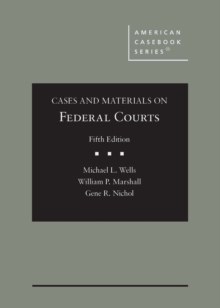
Natural Resources Law : Private Rights and the Public Interest Hardback
by Eric T. Freyfogle, Michael Blumm, Blake Hudson
Part of the American Casebook Series series
Hardback
Description
This casebook offers a view of natural resources law rich in history, yet exposing students to the complexities of practicing natural resources law in the 21st century.
Given that the focus of most Natural Resources Law casebooks is public lands and public law (often at the federal level), this casebook is unique in its primary focus on natural resource conflicts on private lands and its significant focus on private law (though public law is also a focus).
While the authors include chapters on federal public lands and areas of federal primacy like wetlands regulation and endangered species protection, their focus is largely on natural resources law in states that are not dominated by federal public lands, since sixty percent of the land in the United States is privately owned.
The book is especially appropriate for students in states east of the 100th meridian. Although the authors address particular resources separately - including private and public rights in waterways (including the public trust doctrine), wetlands, wildlife, water, minerals, forests, grazing, recreation, and renewable resources - they draw frequent comparisons of the law's treatment of natural resources to allow students to analyze the consistency or inconsistency of natural resources law across diverse subject areas.
For example, with some regularity they offer comparisons of those natural resources that are allocated on a first-in-time principle as opposed to those dispensed according to notions of reasonable use.
They also compare management regimes throughout, including non-governmental decision making. The authors make an effort to build on the students' studies of common law doctrines like trespass, nuisance, and servitude law to show how they influence the use, development, and preservation of natural resources.
The question of development vs. preservation is a persistent issue, and the constitutional takings issue is another repeated theme.
Information
-
Available to Order - This title is available to order, with delivery expected within 2 weeks
- Format:Hardback
- Pages:979 pages
- Publisher:West Academic Publishing
- Publication Date:30/06/2015
- Category:
- ISBN:9780314289124
Information
-
Available to Order - This title is available to order, with delivery expected within 2 weeks
- Format:Hardback
- Pages:979 pages
- Publisher:West Academic Publishing
- Publication Date:30/06/2015
- Category:
- ISBN:9780314289124










